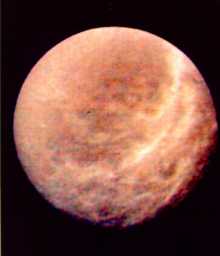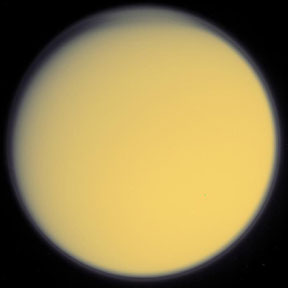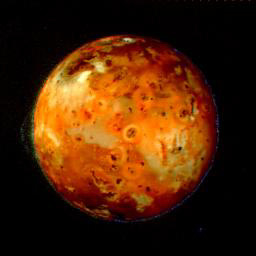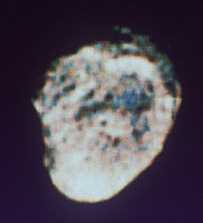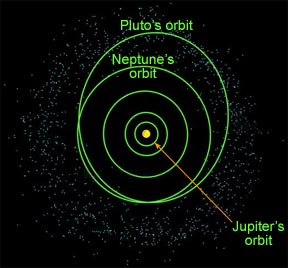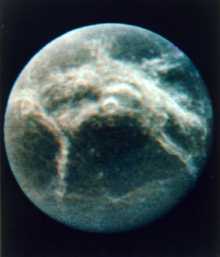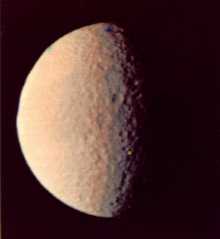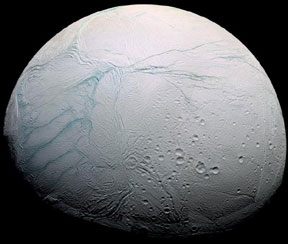Click on image for full size
NASA/JPL
Saturn's Moons and Rings
Saturn has moons and a complex ring system. The moon Titan is one of the few moons in the solar system with a significant atmosphere. (Other moons with some atmosphere include Jupiter's Io, Neptune's Triton, and perhaps Pluto's Charon).
Other unusual moons of Saturn include the "Death Star" shaped Mimas, the half-black, half-white Iapetus, and the garbage-can shaped Hyperion. Prometheus and Pandora act as "shepherd moons" that keep the particles in Saturn's "F ring" in place. Dark Phoebe moves in a strange orbit and may be a captured asteroid or Kuiper Belt Object.
Rhea, Dione, Tethys, Enceladus, Janus and Epimetheus round out the roster of Saturn's medium-sized moons.
Some moons are icy moons and resemble the three outer Galilean satellites. Most of the others are small moons and are essentially large rocks or gravel piles in space. Some mythological figures are associated with Saturn's moons.
The two tables below list all of Saturn's know moons, in order of size (largest to smallest) and in order of their distance from Saturn (closest to furthest).
The Moons of Saturn
|
|
|||||||||||||||||||||||||||||||||||||||||||||||||||||||||||||||||||||||||||||||||||||||||||||||||||||||||||||||||||||||||||||||||||||


